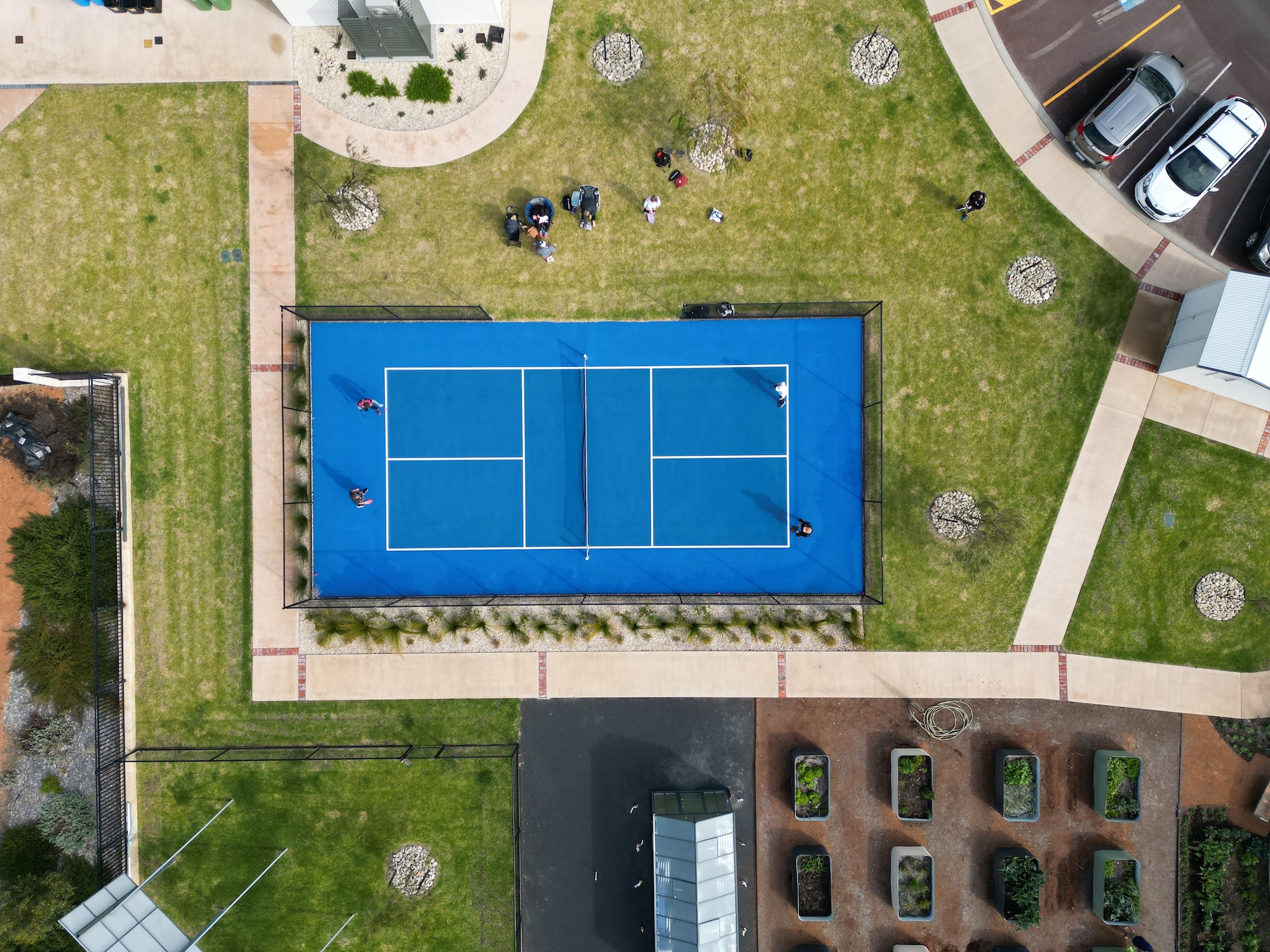Pickleball is a fast-growing sport that combines elements of tennis, badminton, and table tennis. As a beginner, one of the most important aspects to grasp is the unique court dimensions that make this game both challenging and enjoyable. Understanding the pickleball court size and layout is crucial to mastering the game and experiencing all the excitement pickleball has to offer.
Key Takeaways
- Pickleball court dimensions typically include a 20ft x 44ft court with lines, a non-volley zone (or “kitchen”), and net heights of 34 inches at the center and 36 inches at the sidelines.
- Setting up a pickleball court requires accurate measurements, marking lines, setting up nets to correct height & choosing an appropriate location.
- Smaller courts or temporary setups can be considered for those with space constraints while regular maintenance is essential for safety protocols.
Understanding Pickleball Court Dimensions
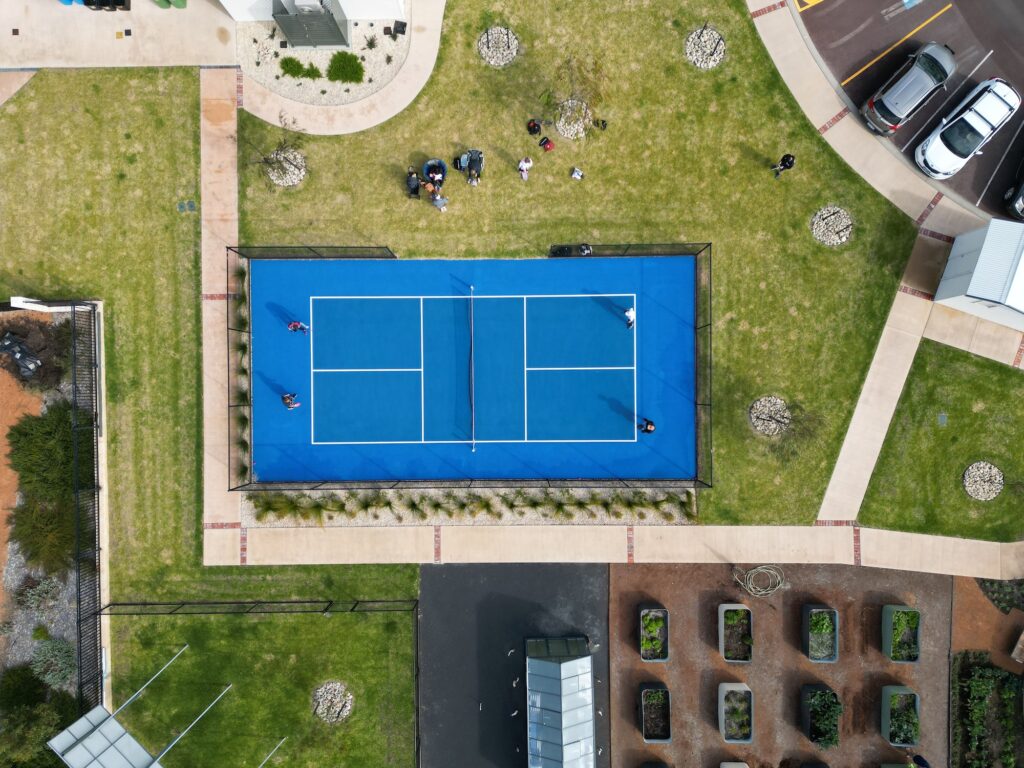
A standard pickleball court measures 20 feet wide by 44 feet long, with playing lines clearly marked. This size is perfect for both indoor and outdoor courts on hard surfaces such as:
- gym floors
- tennis courts
- concrete
- asphalt
A distinctive feature of pickleball courts is the non-volley zone, absent in tennis or badminton courts. This area, colloquially known as the “kitchen,” significantly influences pickleball gameplay on your own pickleball court.
The pickleball net height is another fundamental aspect of court dimensions. The recommended net height is 34 inches at the center and 36 inches at the sidelines. Proper net height and clear court lines are vital for accurate and enjoyable gameplay.
Official Pickleball Court Size
The approved dimensions for a pickleball court are 20ft x 44ft, fine for both indoor and outdoor courts. The court can be constructed using various surfaces, including concrete, asphalt, and artificial turf. The recommended total play area dimensions for an outdoor pickleball court are 34 feet by 64 feet, or a minimum of 30 feet by 60 feet. These dimensions provide ample space for players to maneuver and enjoy the game.
Correctly installing the net is imperative for a satisfying pickleball experience. The net height should be 36 inches at the sidelines. It should be 34 inches in the middle. Don’t forget to consider pickleball court fencing to ensure safety and prevent balls from going out of bounds during play.
Non-Volley Zone (Kitchen)
The non-volley zone, or “kitchen,” is a 7-foot area on either side of the net where players are not permitted to volley the ball. This rule is essential in pickleball gameplay, as it helps maintain a balance between power and finesse shots. The non-volley zone is applicable to all pickleball courts in a facility and is a key factor when designing your own court.
If a player touches the non-volley zone while volleying the ball, it is deemed a fault. This rule applies to both singles and doubles play, and players must be aware of the service courts during gameplay. Grasping the concept of the non-volley zone is key to mastering pickleball strategy and maximizing enjoyment of the game.
Comparing Pickleball Courts to Other Sports Courts
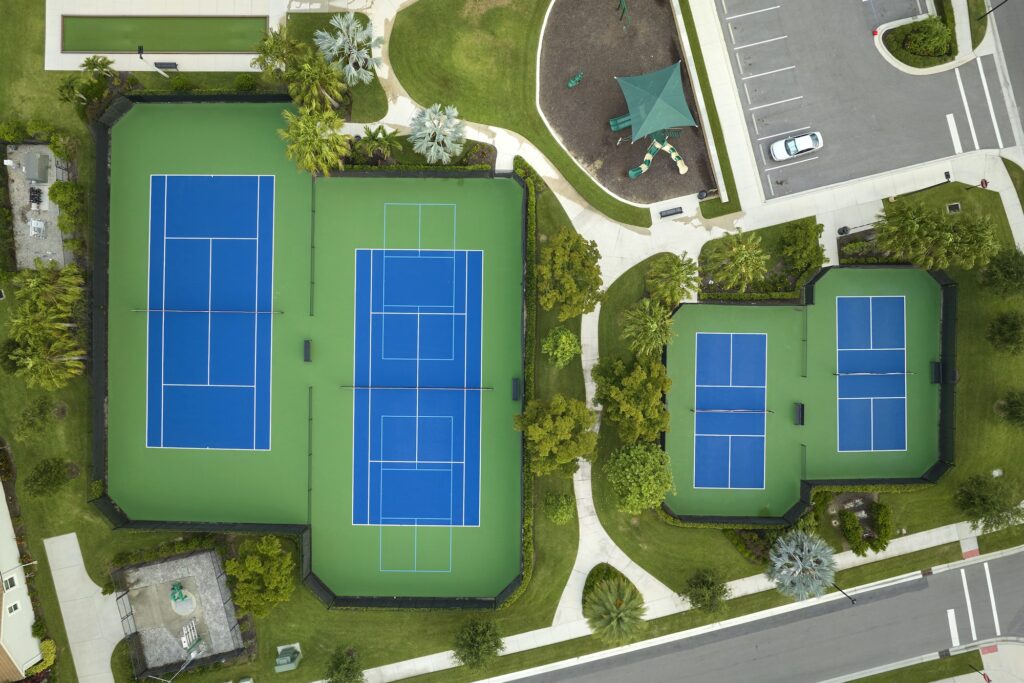
When drawing comparisons between pickleball court dimensions and those of other sports, it’s important to underscore both resemblances and distinctions. A tennis court, for example, is approximately three times the size of a pickleball court, measuring 36ft x 78ft, including doubles alleys. This size difference affects the gameplay, making pickleball a more accessible option for players of all ages and skill levels.
A doubles badminton court, on the other hand, is only slightly larger than a pickleball court, with dimensions of 44ft x 20ft. However, the most significant difference between a pickleball court and a badminton or tennis court is the presence of the non-volley zone, which adds an extra layer of strategy and skill to the game.
Grasping these comparisons between multiple pickleball courts and other sports courts can help players value the distinct aspects of pickleball and how it amalgamates elements of various racket sports into a single thrilling game, encouraging them to play pickleball.
Setting Up a Pickleball Court: Tips and Considerations
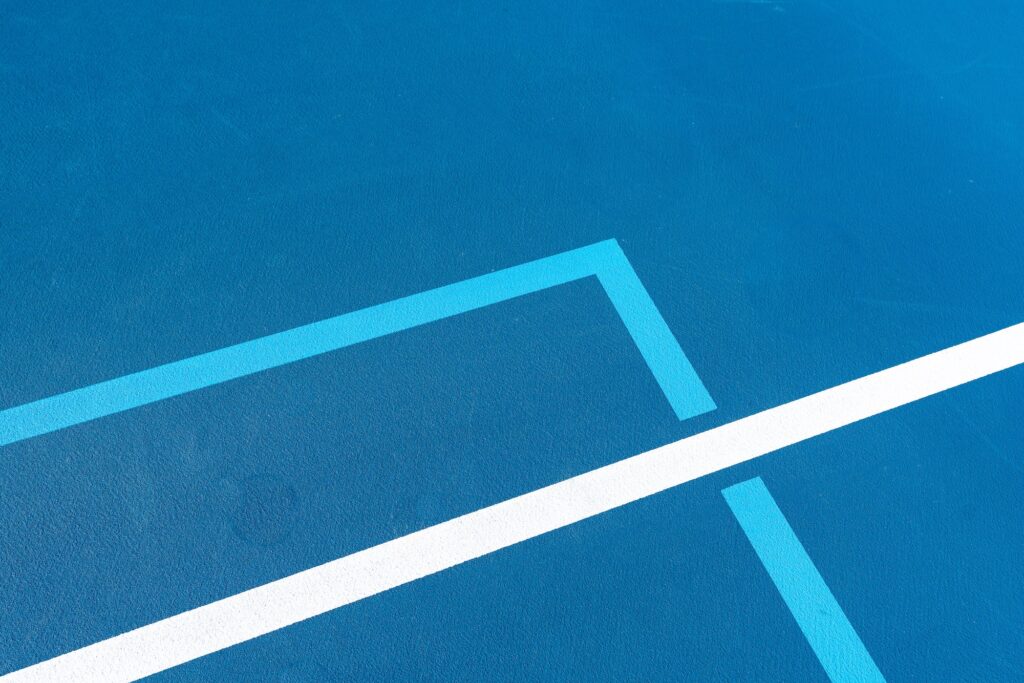
Setting up a pickleball court can be a fun and rewarding project. In the following sections, we’ll provide tips and considerations for choosing the right location, accurately measuring and marking lines, and setting up the net at the correct height.
When scouting a location for your court, it’s important to take into account the size of
Choosing the Right Location
When choosing a suitable location for a pickleball court, it’s fundamental to take into account factors like available space, surface type, and sun direction. Ensure there’s enough room for the court itself, additional space for players to move around, and space for spectators if needed. Suitable surfaces for a pickleball court include concrete, asphalt, and artificial turf.
Sun direction is another crucial factor when choosing a location for your court. Consider the time of day the court will be used, the amount of shade available, and the direction of the sun. Proper planning and consideration of these factors will ensure a comfortable and enjoyable environment for playing pickleball.
Measuring and Marking Lines
Precise measurement and marking of pickleball court lines are necessary for constructing a regulation-sized pickleball court. To ensure precision, use a measuring tape and a chalk line or paint to mark the lines. This process helps create a professional-looking court that adheres to the standard dimensions of a pickleball court.
Tools such as tape, stencils, or paint can be utilized for precise court marking. You can also find pre-made court kits that come with all the necessary materials for marking lines, making it easy to set up a regulation-sized court in no time.
Net Setup and Height
Installing the net in line with USAPA guidelines is fundamental for a fair and enjoyable game of pickleball. The net should be set up at a height of 34 inches at the center and 36 inches at the sidelines. Following these guidelines ensures consistent gameplay and allows players to focus on their skills and strategies.
When constructing a pickleball court, consider investing in a high-quality, rust-resistant net that can withstand outdoor elements. Proper net setup and height contribute to a smooth and enjoyable pickleball experience for players of all levels.
Alternative Pickleball Court Options
In some instances, adhering to the recommended dimensions for a standard pickleball court may not be possible due to space constraints or the need for a provisional playing area.
In the following sections, we’ll explore alternative court surface options, including smaller court sizes and temporary court setups.
Smaller Court Sizes
If adhering to the recommended dimensions for a pickleball court isn’t possible, one can resort to smaller court sizes. However, keep in mind that smaller court sizes can directly impact gameplay, as they may restrict the amount of space available for players to maneuver and execute shots.
When mulling over smaller court sizes, it’s critical to find a balance between available space and the quality of gameplay. While it may be necessary to adjust court dimensions to fit your specific location, always try to adhere as closely as possible to the standard regulations to ensure an enjoyable and fair game.
Temporary Court Setups
For sporadic play or when space is at a premium, temporary court setups can be an ideal solution. Portable nets and removable lines make it easy to set up a court when needed and dismantle it when not in use. Some popular temporary court setup options include lowering a tennis net to 34 inches in the center and using taped or painted lines on the court for pickleball.
Another option is using a portable court marking system, such as Cortable, to set up a full-size pickleball court in any location. Temporary court setups allow players to enjoy the game of pickleball without the need for a permanent court, making it more accessible to a wider range of players.
Pickleball Court Maintenance and Safety
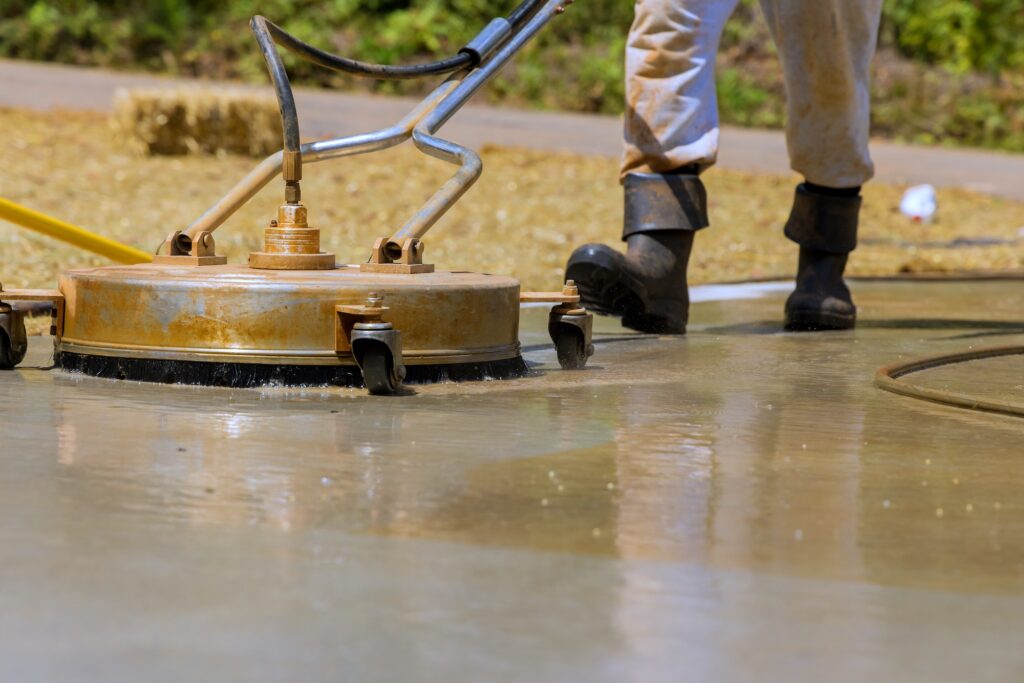
To guarantee a safe and enjoyable pickleball experience, it’s critical to upkeep the court and adhere to proper safety protocols. Keeping the court clean and free of debris helps prevent slips and falls, while ensuring proper margins around the court provides adequate space for player movement and safety.
In addition to regular court maintenance, accessories such as windscreens, court dividers, and court lighting can improve the overall playing experience and safety. By dedicating resources to proper court maintenance and safety measures, you can guarantee a fun and safe environment for all pickleball enthusiasts.
Summary
In conclusion, understanding pickleball court dimensions and setup is essential for beginners and experienced players alike. From the official court size and non-volley zone to alternative court options and proper maintenance, mastering these aspects of the game will help you enjoy pickleball to its fullest potential.
Whether you’re setting up a court in your backyard or participating in a local tournament, having a solid grasp of court dimensions and regulations will enhance your gameplay and appreciation for this exciting sport. It’s time to grab your paddle, step onto the court, and experience the thrill of pickleball!
Frequently Asked Questions
What are the dimensions of a pickleball court?
A standard pickleball court measures 20 feet wide and 44 feet long, with the net height of 36 inches high at the sidelines and 34 inches high in the middle. The minimum playing surface required by USA Pickleball is 30 feet wide by 60 feet long.
How high do ceilings need to be for pickleball?
For pickleball, the recommended minimum ceiling height is 39 feet above the court floor as per USAP construction manual.

